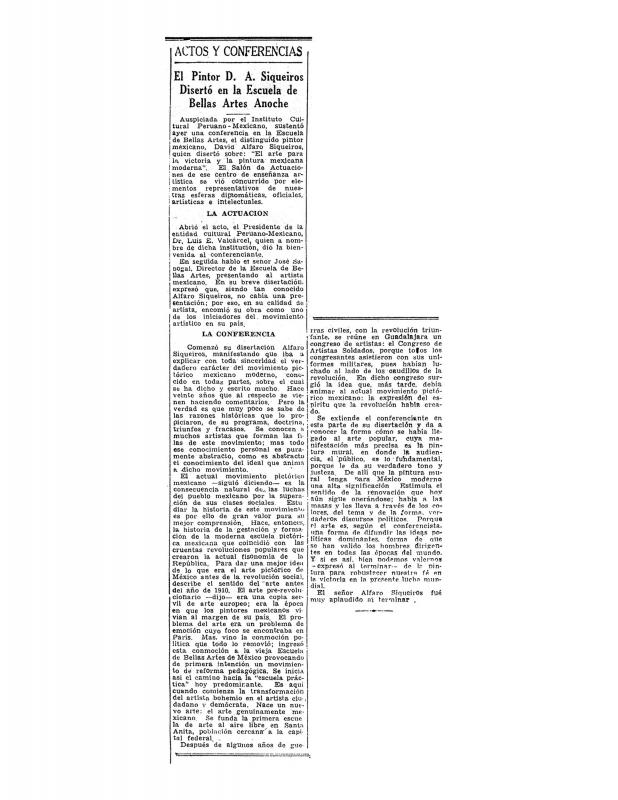This article by Peruvian poet and Communist activist Gustavo Valcárcel praises the life and work of Mexican muralist David Alfaro Siqueiros.
Starting with its peak in the 1920s, Mexican muralism was a crucial point of reference for many groups of leftist Peruvian intellectuals. The important role of muralism was reaffirmed in the forties and fifties, when tendencies from Europe, first of a figurative and then of an abstract nature, entered the local art scene. “Cosmopolitism” and its rejection of the possibility of “Peruvian painting” was seen as a threat by progressive sectors that envisioned Mexican muralism as an example of modern art that was also nationalist and committed. At the same time, the “germinal” nature of Mexican art was also pointed out: it was seen as the authentic product of a young continent that had the potential to take center stage in art at a time when a decadent postwar Europe was giving rise to so many “isms.” This point of view was confirmed in the award granted to David Alfaro Siqueiros (1896–1974) at the XXV Biennale di Venezia in 1950 [see in the ICAA digital archive “México triunfa en Venecia” (unsigned) (doc. no. 759059)]—the occasion for this interview with the Mexican painter by Gustavo Valcárcel (1921–92). As a member of the PCP (Peruvian Communist Party) and of the “Poetas del pueblo” [The People’s Poets], a group of activists who opposed pure poetry, Valcárcel admired Siqueiros due to his committed political stance. In 1943, Siqueiros visited Lima briefly to give a lecture (there is no record of any polemic surrounding that event).
[For additional information, see the following articles: (unsigned) “Actos y conferencias: el pintor D. A. Siqueiros disertó en la Escuela de Bellas Artes anoche documentos” (doc. no. 1143245), and (unsigned) “De arte: se efectuó ayer la conferencia del pintor mexicano Siqueiros” (doc. no. 1143260)].



